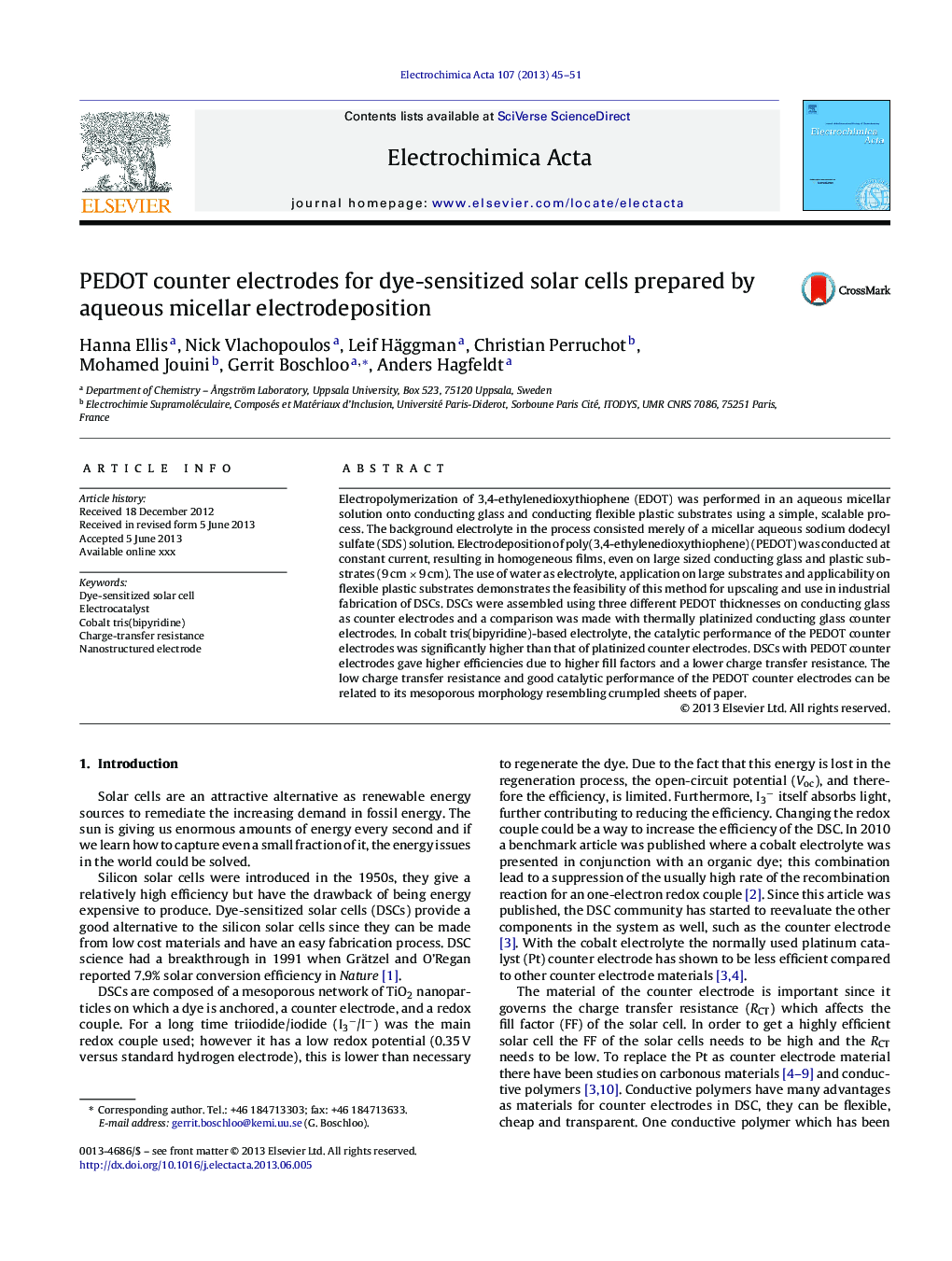| Article ID | Journal | Published Year | Pages | File Type |
|---|---|---|---|---|
| 6616573 | Electrochimica Acta | 2013 | 7 Pages |
Abstract
Electropolymerization of 3,4-ethylenedioxythiophene (EDOT) was performed in an aqueous micellar solution onto conducting glass and conducting flexible plastic substrates using a simple, scalable process. The background electrolyte in the process consisted merely of a micellar aqueous sodium dodecyl sulfate (SDS) solution. Electrodeposition of poly(3,4-ethylenedioxythiophene) (PEDOT) was conducted at constant current, resulting in homogeneous films, even on large sized conducting glass and plastic substrates (9 cm Ã 9 cm). The use of water as electrolyte, application on large substrates and applicability on flexible plastic substrates demonstrates the feasibility of this method for upscaling and use in industrial fabrication of DSCs. DSCs were assembled using three different PEDOT thicknesses on conducting glass as counter electrodes and a comparison was made with thermally platinized conducting glass counter electrodes. In cobalt tris(bipyridine)-based electrolyte, the catalytic performance of the PEDOT counter electrodes was significantly higher than that of platinized counter electrodes. DSCs with PEDOT counter electrodes gave higher efficiencies due to higher fill factors and a lower charge transfer resistance. The low charge transfer resistance and good catalytic performance of the PEDOT counter electrodes can be related to its mesoporous morphology resembling crumpled sheets of paper.
Related Topics
Physical Sciences and Engineering
Chemical Engineering
Chemical Engineering (General)
Authors
Hanna Ellis, Nick Vlachopoulos, Leif Häggman, Christian Perruchot, Mohamed Jouini, Gerrit Boschloo, Anders Hagfeldt,
